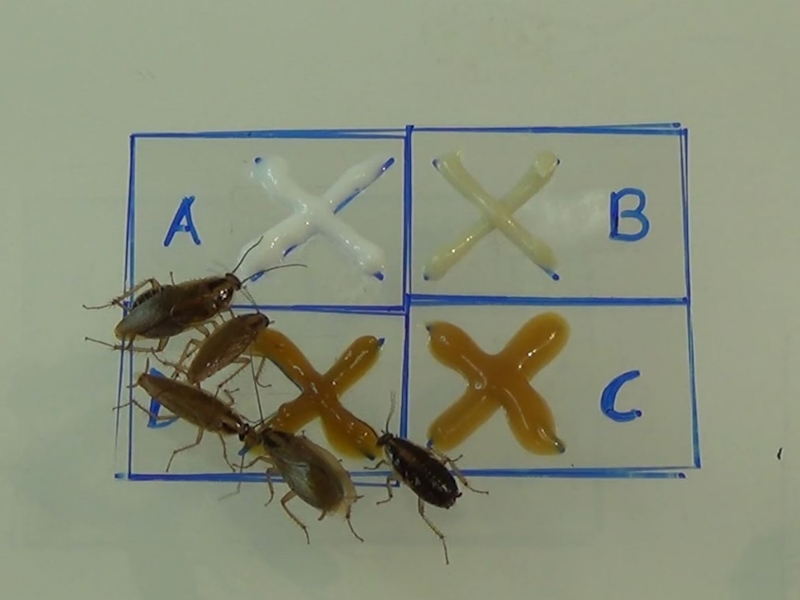Baits to fight against pests have become very popular in recent years and the reason is easy to explain. Unlike liquid insecticides, the baits are applied in drops, which avoids contaminating the surfaces and, because the places where German cockroaches or ants are used to feed are bars, private kitchens or restaurants, this is very valuable. Another characteristic of baits which makes them very appreciated, is that the applicator doesn’t need to find the insects as these will be responsible for finding the bait, crawling out of the shelters where they hide. Baits, good baits, also have a multiplier effect. Ants are used to circulating the food within the colony thanks to trophallaxis, which is the behavior when an ant regurgitates food directly into the mouth of another ant. This is common both between adult insects as well as to feed larvae. If the food regurgitated is poisoned with a slow action insecticide, the chemical will circulate in the colony until killing it all. Cockroaches do not exchange food between themselves but they eat dead individuals of the same species and if the dead roach was killed by a bait, if it is eaten by another cockroach, it will also die. This is called “secondary killing”.
So, a good bait is a very effective strategy to deal with our pest problems, but how should a good bait be?
First of all the bait has to be palatable, which means “tasty”, in all conditions and environments. With cockroaches it is not as complicated as it is for ants. Cockroaches less or more always live in the same place and have almost the same food, so if a bait is palatable today, it will be palatable next month too. With ants it is different because there are many species, which can feed on different types of food, preferring protein or sugar. The same preferred food can change during the year, being different in spring, when the ants start to forage after winter, or when they are storing food before the cold season. The availability and characteristics of the food also change a lot over the year, continuously affecting the competition with our bait. This aspect is especially difficult to simulate in the laboratory where the choice of alternative foods is limited compared to what happens in the field.
Other aspect that affects the quality of our ant bait is the active ingredient, which should not reduce the palatability of the gel, as happens with pyrethroids. For this reason, it is better to develop the blank bait (without active ingredient) first, and just when the palatability is reached the bait with the active ingredient should be tested, to avoid misunderstanding the results. In fact, if we provide an insecticide bait to insects, if they do not die, we do not know if it is because the active ingredient is not effective or because the insects don’t eat the bait. And if the insects do not eat the bait, we cannot know if it is because the bait itself is not palatable or if it because the active ingredient gives it a bad taste.
A bait for ants should be as liquid as possible, to make it easy to assume, but not overly liquid to make it leach when applied on vertical surfaces. A bait should not be too sensitive to ambient humidity, which can make it dry out or melt. A bait should stay palatable and the active ingredient should not degrade for a long period.
The insecticide should not kill quickly, to allow the trophallaxis of ants, or to allow the cockroach to go back to the resting place, where other cockroaches stay, to permit the secondary killing.
It is clear that there are many aspects to be considered during the development of a new bait and the procedures of the tests have to take them into account. Because of this complexity one procedure of testing is not sufficient to investigate all these aspects and different protocols have to be followed, depending on the aspect we want to underline, using different species, simulating different environmental conditions, different food competition.
If the development is done well, the result will be a good bait, otherwise it will seem an excellent bait in the laboratory but when used in the field the results will be disappointing.


